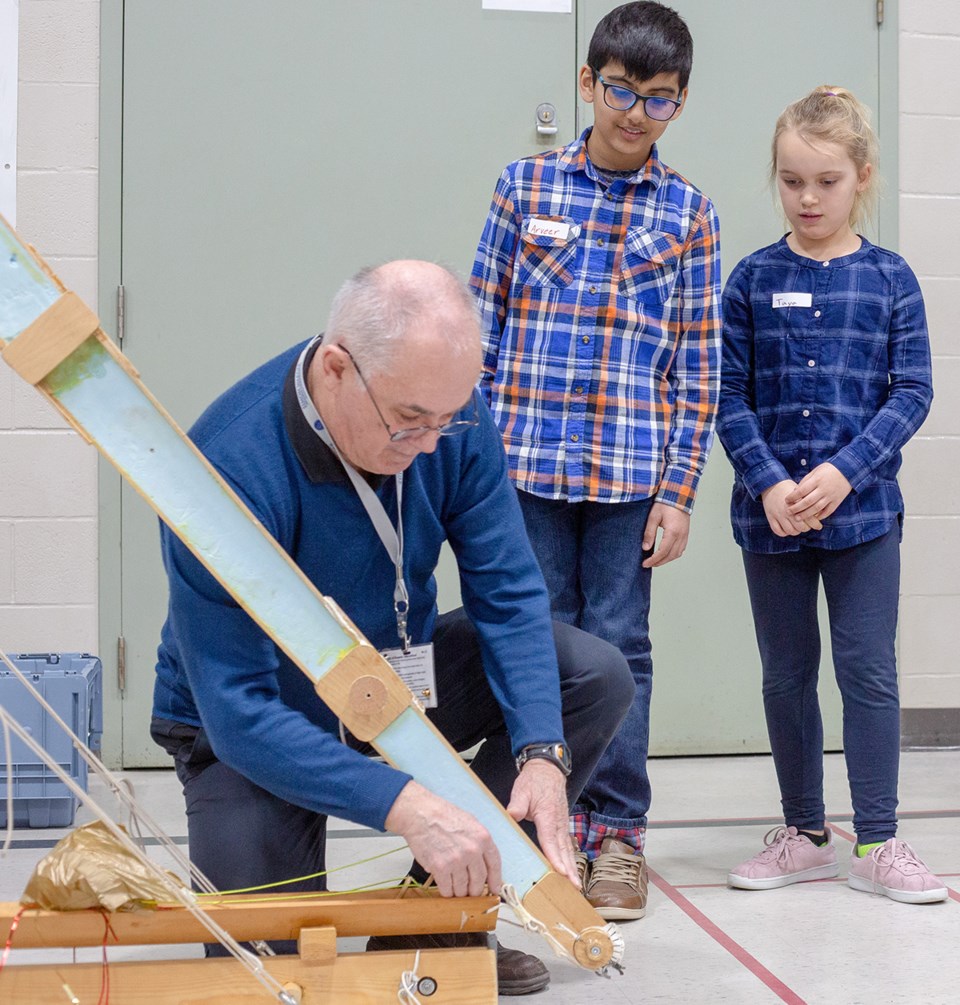Troy Shantz
A foam ball sails through the air and strikes the gymnasium’s wall.
“Ahh!” A startled woman standing nearby shrieks, turning to find its source.
Thirty feet away stands a model trebuchet - a medieval weapon once used to lob projectiles over castle walls.
The third-graders at Errol Road School giggle as retired engineer John Ward explains how the ball’s loft and distance is determined by settings on the five-foot-high contraption.
Ward is one of 44 volunteers with the newly renamed Science Discovery Squad, an initiative that pairs retired scientists, engineers, programmers and farmers with local primary students.
“It’s actually a heck of a lot of fun and the kids are fantastic,” said Ward, 71, a seven-year participant.
“Anybody who thinks we don’t have bright kids now doesn’t know what they’re talking about.”
He joined a recent gathering to show teachers and volunteers how the program is changing to better suit student needs.
Originally called “Adopt-a-Scientist,” it began in 1995 when retired scientists and engineers from Imperial Oil volunteered to work with local students, said program organizer Wendy Hooghiem.
There are now four disciplines: science, bridge building, agriculture and computer coding. The Science Education Partnership, which oversees the program, said the changes are based on teacher requests.
Volunteers develop lessons, like the trebuchet, which is transported from school to school and used by volunteers to compliment the curriculum.
“A lot of this stuff is something (teachers) wouldn’t normally be able to get their hands on,” said Hooghiem.
“It’s in the curriculum, but it’s over and above maybe what they would take on doing themselves.”
Teachers contact Hooghiem when tackling a subject that an industry professional could help with. An assigned professional then teaches a lesson or concept through hands-on activities over a 100-minute period.
Activities at the Feb. 21 demonstration included bridge building with Popsicle sticks, electrical simulations, and a leaf-blower powered hovercraft - which floated willing participants across the gymnasium floor.
Last year there were 190 requests for classroom science demonstrations.
“We can’t keep up. We’re full and I’m turning (requests) away,” said Hooghiem. “I honestly would like to have an army of 100 volunteers.”
She would also like to increase the number of tradespeople in the volunteer mix, she added.
